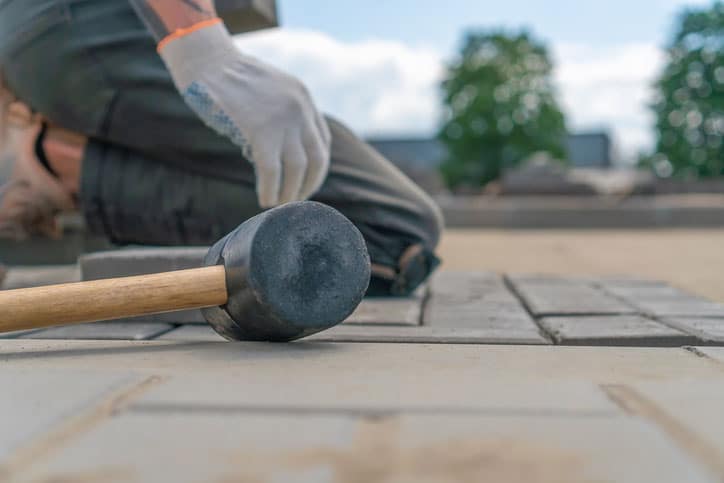Landscaping blocks are often used for retaining walls, planter boxes, tree rings and other forms of hardscaping. They may look glued together at first glance, but the reality is, most are not adhered in that way. In this guide, we’ll explain how landscaping blocks are installed to give you a better understanding of the process.
The Difference between Glue and Mortar
It’s important to note the difference between clue and mortar. Both can be used as adhesives for landscaping blocks and bricks, but they serve different purposes. Mortar is the porous grout that you see on most brick walls. It seals the edges of the bricks and stabilizes it, and it has the consistency of wet cement when it’s installed.
Construction glue is not designed to act as a grout. It may hold a stone in place, but it’s not going to provide the same all-around support that mortar offers. Most retaining walls are not mortared together, and they may only need glue in select areas. The next section of this guide explains more.
How Most Retaining Walls Are Built
The specific installation technique used for your landscaping blocks will depend on the size of your retaining wall and what it’s aiming to retain. Here are basic steps for installing a retaining wall:
- Dig a trench to create a base for the retaining wall. The taller the wall, the deeper the base needs to be.
- Fill the trench with sand, cement or gravel, depending on your needs.
- Level the ground beneath the pavers and compress the materials from Step 2.
- Set the first layer of retaining wall blocks into the trench, leveling each one individually.
- Stack the next layer of stones in a staggered pattern.
- If the retaining wall has land behind it, backfill the area behind the blocks with soil or gravel. Taller walls need gravel for appropriate support and drainage, but short walls may only need soil.
- Complete the staggered installation and attach the cap stone on the top layer. Many installers will glue the cap stone in place, since that is the stone most susceptible to movement.
As you can see, most landscaping blocks are not glued together. The weight of the blocks and the staggered pattern create a secure structure. The wall may shift with time because of the soil below and the general changes in weather. This stacked but not glued feature allows the blocks to move slightly in those circumstances without cracking or falling apart.
When It Makes Sense to Adhere Landscaping Blocks Together
Gluing the capstone on a retaining wall may prevent it from moving. This is the stone that might get kicked or bumped into when someone is around the retaining wall. There are also times when gluing a wall together is the only way to secure it on a particular area. Every property and every project has unique needs.
Reasons Not to Glue Landscaping Blocks Together
The truth is that many landscaping blocks are not designed to be glued together. For example, Verazzo stone has holes already installed on the blocks. You can install rods in these holes to link the blocks together without glue.
In the case of brick pavers used for patios, driveways, walkways, etc., mortar is more of a hindrance than a help. Sand is used as an alternative joint filler to keep the pavers in place while still allowing for movement.
Take the Hassle out of Landscaping Block Installation
If you work with a professional hardscaping company, you won’t have to worry about any of this. They can evaluate the situation and recommend the appropriate installation techniques for your property and goals.
It’s The Brick Guys offers brick paving, retaining wall construction, paver restoration, tree rings, hardscaping and more. We utilize advanced techniques and premium materials to ensure long-lasting results from our paving services. If you’d like more information about how to transform your property, call (833) 627-4257 to schedule a quote for landscaping block installation.

